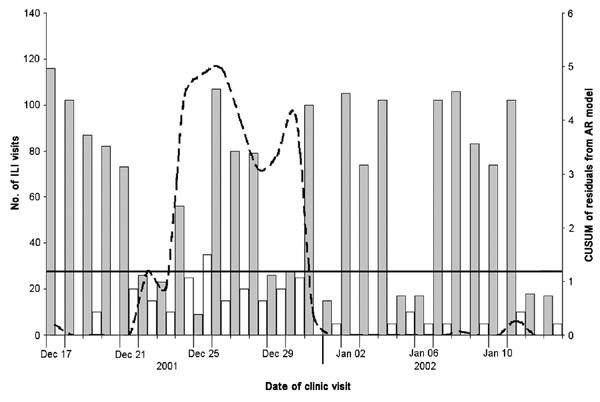Volume 10, Number 10—October 2004
Research
Syndromic Surveillance for Influenzalike Illness in Ambulatory Care Setting
Figure 4

Figure 4. Cumulative sum (CUSUM) control chart of a hypothetical anthrax release occurring December 17, 2001. CUSUM of the residuals (broken line) is charted over the observed number of influenzalike (ILI) visits to the HealthPartners Medical Group (white bars) and the additional outbreak-associated ILI cases (dark gray bars). The system threshold, the CUSUM decision interval (solid line), is exceeded on December 24 and remains above threshold until December 30. With high levels of ILI occurring in the winter months, this scenario demonstrates the ability of the system to detect increased ILI visits during influenza season and over the winter holidays.
Page created: June 15, 2011
Page updated: June 15, 2011
Page reviewed: June 15, 2011
The conclusions, findings, and opinions expressed by authors contributing to this journal do not necessarily reflect the official position of the U.S. Department of Health and Human Services, the Public Health Service, the Centers for Disease Control and Prevention, or the authors' affiliated institutions. Use of trade names is for identification only and does not imply endorsement by any of the groups named above.